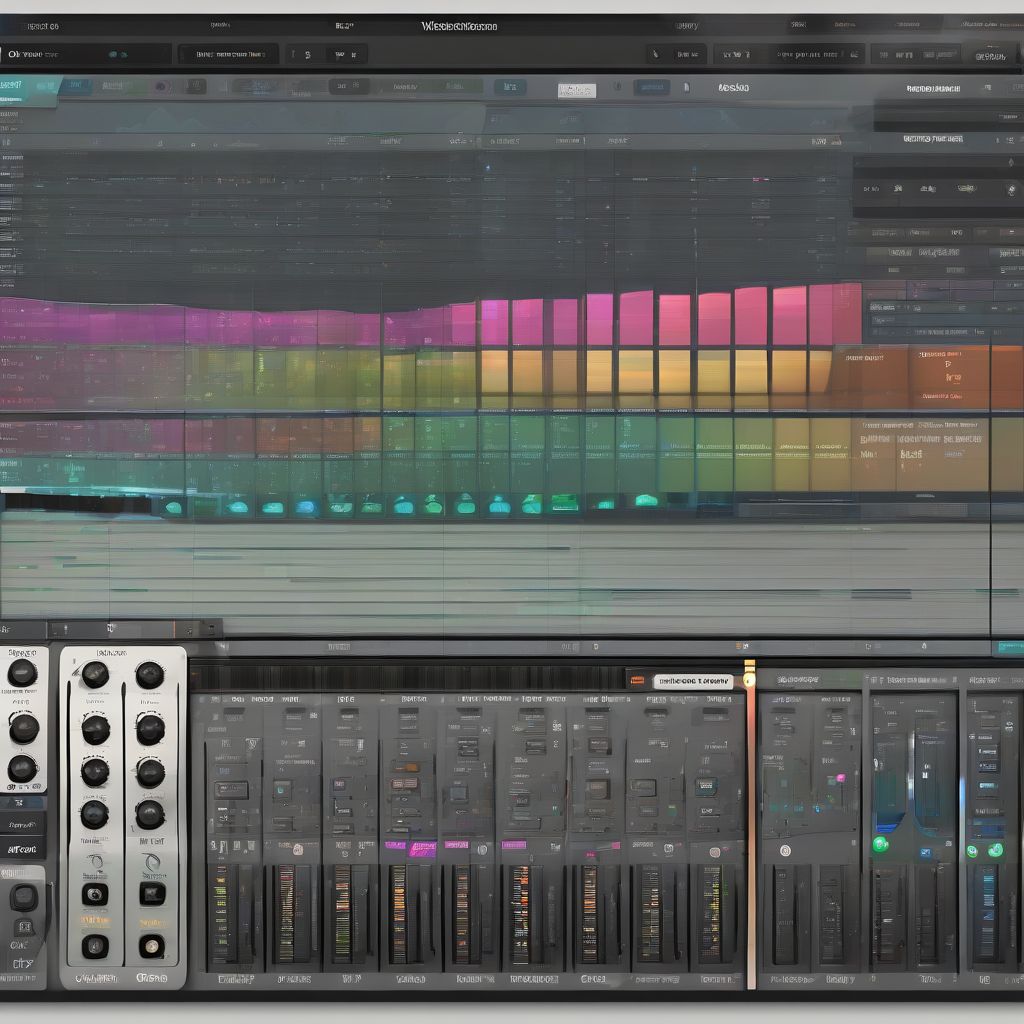Have you ever listened to a song and thought something sounded off? Maybe the vocals were too loud, or the drums were drowning everything else out. Achieving a balanced mix in your recordings is crucial for creating professional-sounding music that is enjoyable to listen to. It’s like crafting a delicious meal – every ingredient plays a vital role, and the right balance can make all the difference.
Understanding the Importance of a Balanced Mix
A balanced mix ensures that each element in your track – vocals, instruments, sound effects – can be heard clearly and sits well in the overall sonic landscape. This clarity allows the listener to fully appreciate each part and experience the emotional impact of your music. Imagine a choir where one voice overpowers all the others. It wouldn’t sound very harmonious, would it?
 Balanced Audio Mix
Balanced Audio Mix
Key Elements of a Balanced Mix
1. Volume Levels and Panning
This is the foundation of a good mix. Each element should have a designated space in terms of volume (how loud or soft it is) and panning (its position in the stereo field – left, right, or center). Imagine arranging musicians on a stage – you wouldn’t want the drummer right next to the vocalist, would you?
2. Equalization (EQ)
EQ shapes the tonal quality of your sounds. It helps to carve out space in the frequency spectrum so that different instruments don’t clash. Think of it as fine-tuning the ingredients in your recipe – adding a pinch of salt here, a dash of pepper there, to enhance the overall flavor.
3. Compression
Compression helps to control the dynamic range of your audio – the difference between the loudest and quietest parts. It can make your tracks sound fuller and more powerful. Imagine a chef carefully adjusting the heat under a simmering sauce to ensure it cooks evenly and develops a rich flavor.
4. Reverb and Delay
These effects add a sense of space and depth to your mix. Reverb simulates the sound of a room or environment, while delay creates a repeating echo. Used subtly, these effects can make your music sound more immersive and professional. Think of it like adding the finishing touches to your culinary masterpiece – a sprinkle of fresh herbs or a drizzle of olive oil to elevate the presentation and aroma.
Practical Tips for Achieving a Balanced Mix
1. Start with a Solid Arrangement
A well-arranged song is the foundation of a great mix. Make sure each instrument has its own space and that the parts complement each other.
2. Use a Reference Track
Choose a professionally mixed and mastered song in a similar genre to yours and use it as a guide while you mix.
3. Take Breaks
Your ears can get fatigued after prolonged listening, so take regular breaks to refresh your perspective. It’s like cleansing your palate between bites of food to fully appreciate each flavor.
4. Don’t Be Afraid to Experiment
There are no hard and fast rules in mixing. Don’t be afraid to try different techniques and trust your ears.
Conclusion
Achieving a balanced mix is an art form that takes time and practice. Remember that music is subjective, so trust your instincts and develop your own mixing style. By understanding the key elements and using these practical tips, you’ll be well on your way to creating professional-sounding music that captivates your listeners.
Now, it’s your turn to share! What are some of your biggest mixing challenges? What techniques have you found helpful in achieving a balanced sound?
[amazon bestseller=”audio-mixing”]
